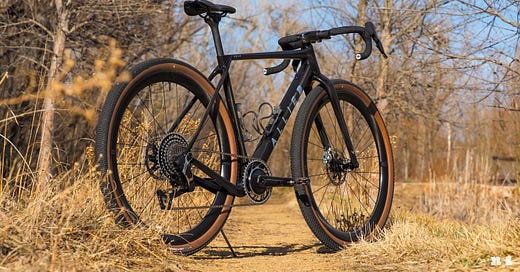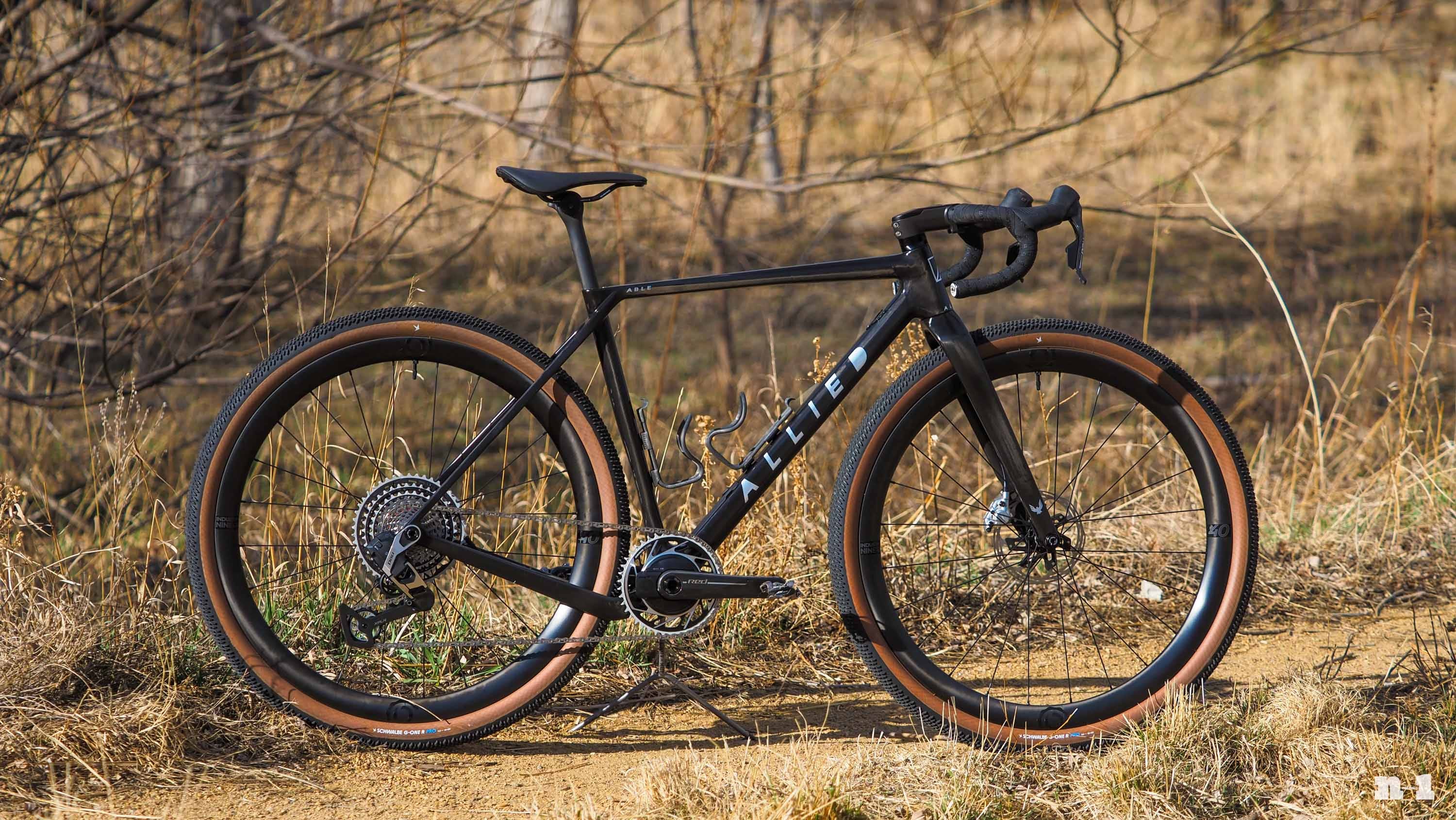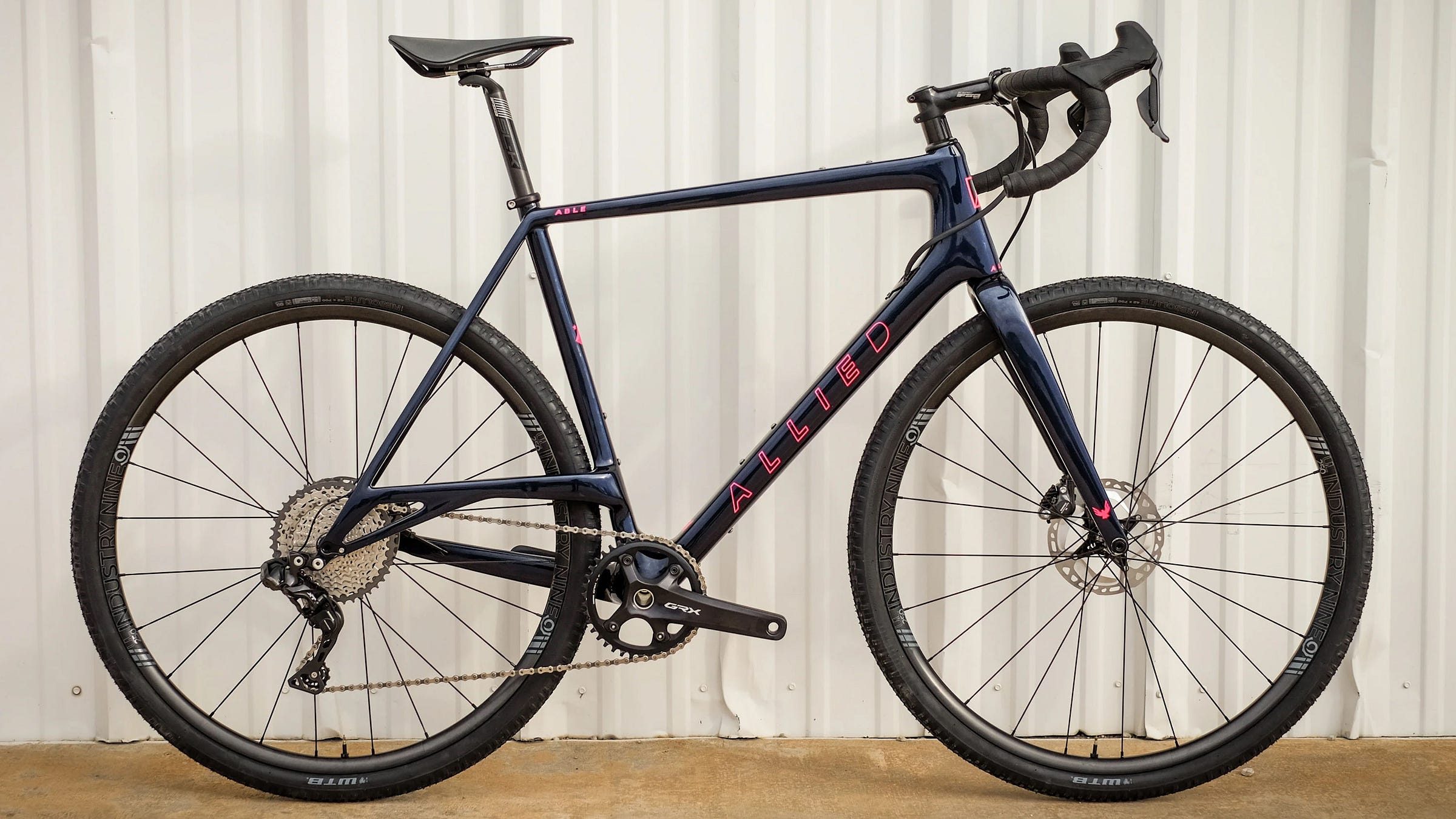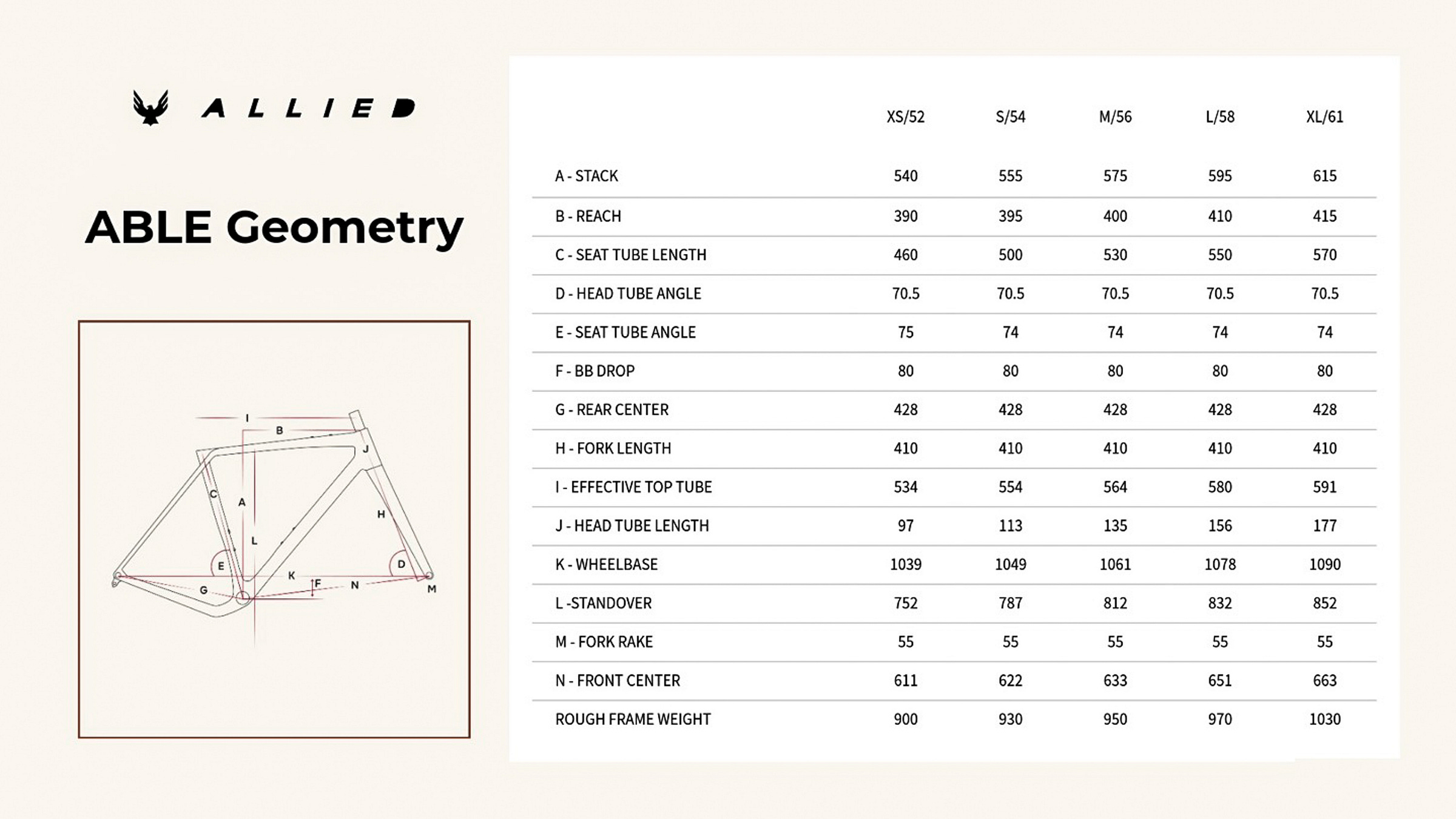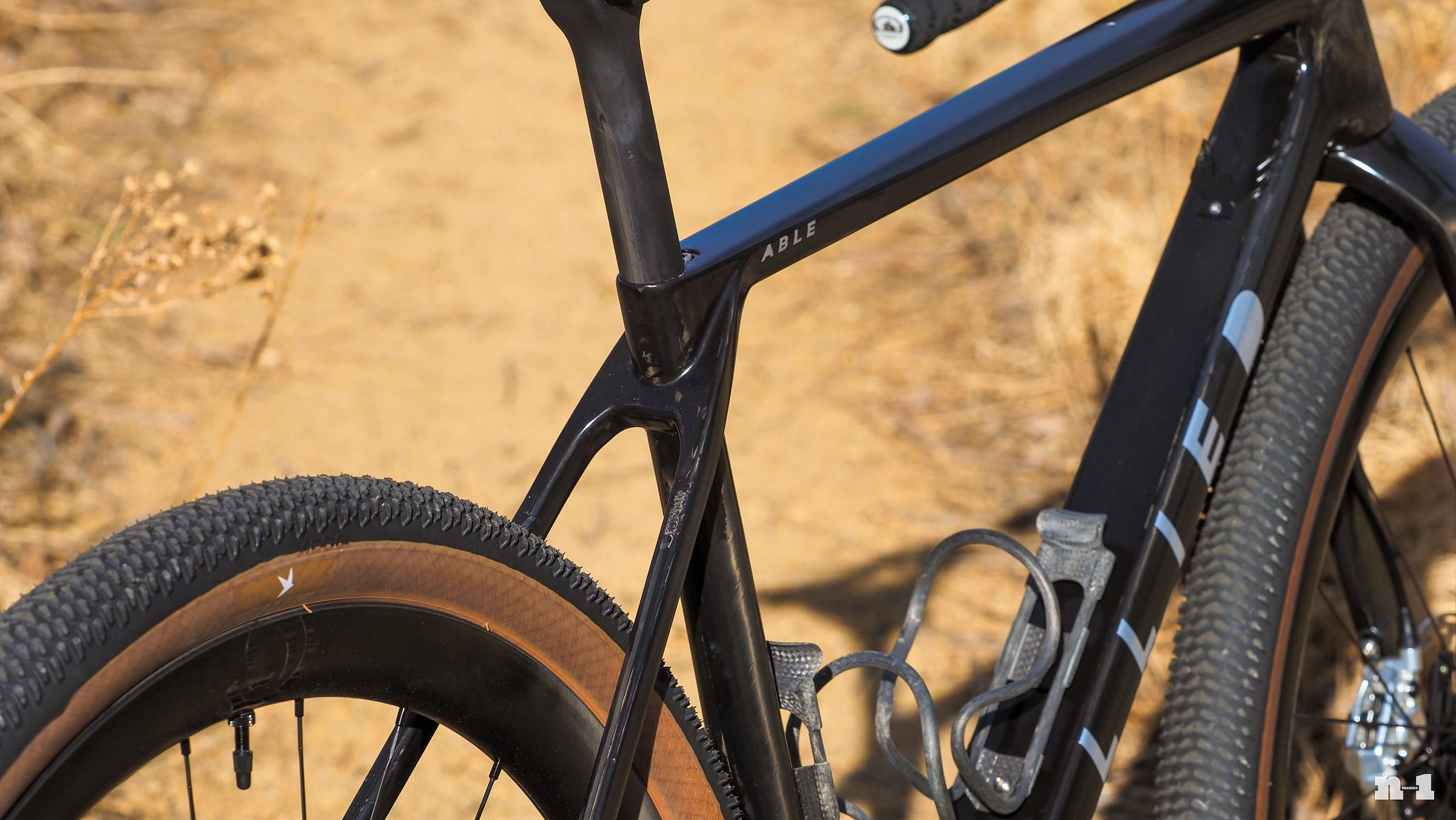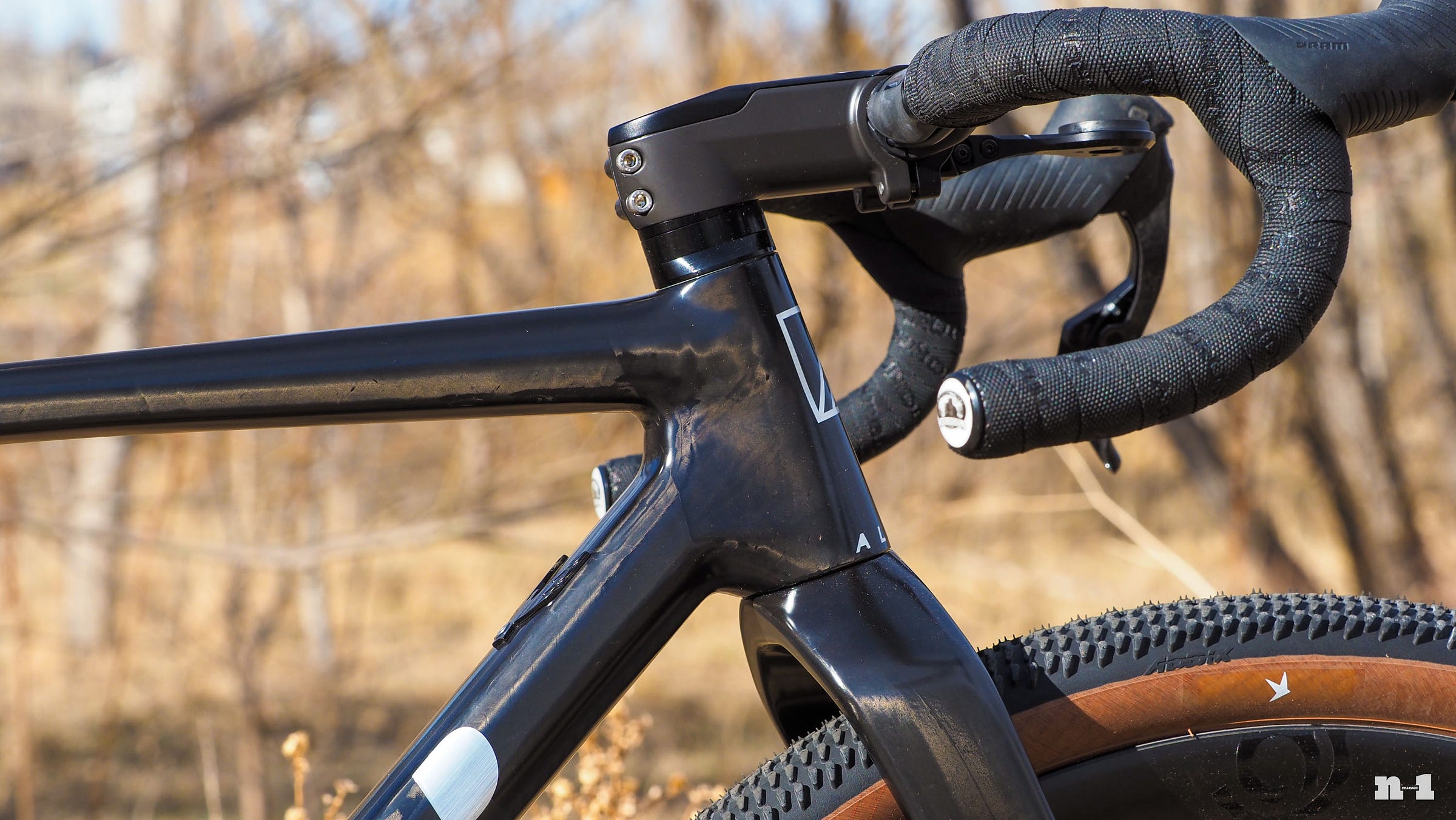Allied Able gravel bike review: Finger on the pulse
The new Able is a dramatic departure from the original one – and right on the cutting edge of where modern gravel riding and racing is heading.
Bikes typically undergo mostly evolutionary updates from generation to generation, but for the revamped Able gravel bike from Allied Cycle Works, the 2025 model is nothing short of a sea change. The most obvious difference is the loss of the original Able’s unconventional elevated driveside chainstay, but focusing only on that would miss the point. It’s dramatically lighter, it rides much better, it has a ton more tire clearance, and its aesthetics are far less polarizing.
The new Allied Able is a legitimate competitor for the widely praised Enve MOG, in fact, and an embodiment of how much gravel riding (and racing) has changed in just a few short years.
Pros: Superb tire clearance, impressively light, great ride quality, just-progressive-enough handling, tasteful aesthetics, UDH compatibility, conventional round seatpost and threaded bottom bracket, handy internal frame storage, a bit less expensive than it used to be.
Cons: Allied’s proprietary internal routing and stem are still a bit of a headache (but external routing is an option), not that much less expensive given it’s no longer made in Arkansas.
The takeaway: This would be on my short list if I were shopping for a cutting-edge carbon fiber gravel racer and had money to burn.
Making the Able more able
It hasn’t even been a full six years since Allied debuted the first-generation Able, and it’s remarkable to see how much things have changed.
Back then, the Able’s tire clearance was considered fairly generous in that it easily accepted 700x43 mm tires (or a bit more, depending on the specific rim-and-tire combo). And if you wanted to get really crazy, you could go with 47 mm-wide tires on 650b rims – truly radical stuff. But to do so while maintaining a compact 420 mm rear end and standard English-threaded bottom bracket, Allied took the unusual approach of outfitting the carbon fiber frame with an elevated driveside chainstay while also only making the frame compatible with 1x drivetrains (keep in mind that SRAM’s XPLR stuff hadn’t been introduced yet).
The trail dimension was a quick 68 mm for the nimble handling most people wanted, there were three bottle mounts and top tube bag mounts for all-day adventures, and front and rear fender mounts because lots of people wanted their gravel bikes to be foul-weather machines so they could spare their nice road bike from the abuse.
As for weight, a medium Able frame officially tipped the scales at 1,250 g – a little higher than some of the competition at the time, but still within the ballpark.
Fast forward to this new Able, and oh my. It’s still made of carbon fiber, but there are so many changes that I almost wonder why Allied bothered to keep the name.

Tire clearance has grown to a whopping 700x57 mm front and rear (and Allied doesn’t even bother quoting a 650b figure since so few people still use it). The frame has dropped 300 g (nearly 25%!), bringing the claimed figure down to a much more impressive 950 g for a medium. It still has an English-threaded bottom bracket, but instead of the elevated driveside chainstay, the new Able switched to a symmetrically dropped configuration.
The frame geometry has been massaged to fit around those bigger treads, but it’s not a wholesale rethink. Up front, the head tube angle has been only slightly slackened from 71° to 70.5°, but the fork offset has increased from 51 to 55 mm. Calculated with a 40 mm-wide tire on the old bike and a 50 mm tire on the new one (in keeping with the intended spec), the trail dimension is only slightly more stable at 71 mm vs. 68 mm on the first-gen model. The front center dimension has grown substantially, though, partially from the revised steering geometry, but more because of the 10-14 mm increase in reach dimensions across the five-size range (which is now paired with shorter stems). Even with a 50 mm tire, the generous 633 mm front center on the medium means that toe overlap shouldn’t be an issue for the vast majority of riders.
Between the new chainstay configuration and bigger tires, there’s obviously no way Allied could have maintained that stubby 420 mm chainstay length – but then again, given the increase in front-end length, that wouldn’t have been a good idea, anyway. The rear center has grown to 428 mm, which is still plenty short given the massive tire clearance, but more importantly, it helps to maintain the intended front-to-rear rider weight distribution with the longer front end. Bottom bracket drop has grown from 70 to 80 mm to help maintain a similar center of gravity with the bigger tires.
Other changes are more subtle.
There’s still a mount on the top tube for a bag, but the third bottle mount on the underside of the down tube has gone away. Those front and rear fender mounts? Bye-bye. There’s now internal storage built into the down tube featuring a novel magnetic hatch and a storage bag with handy elastic loops to help keep your gear organized and rattle-free. Up top, the external aluminum seatpost collar on the old Able has given way to a hidden wedge-type binder that resides inside the top tube (but the seatpost is still round with a 27.2 mm diameter). And as you’d expect out back, there’s a UDH-compatible rear dropout.
Also as you’d expect, routing has also gone from the old bike’s partially external setup to a fully internal configuration shared with the Allied Echo all-road bike. It requires a proprietary stem (which Allied machines in-house), but assuming modest changes in dimension, Allied has at least made it possible to swap the length without disconnecting the brake hoses. A reversible angled spacer setup also allows for roughly a centimeter of height adjustment with minimal disassembly.
As on the Echo, the Able is only compatible with electronic drivetrains – though that’s perhaps just as well since the stem’s convoluted housing path would wreak havoc on mechanical shifting performance. And like on the first-generation Able, the new one once again won’t work with multiple chainrings since there’s no way to attach a front derailleur. In fact, the drivetrain options are even more restrictive this time around since the frame will only work with fully wireless setups, which basically limits you to SRAM (and presumably whatever Shimano is cooking up for its much-anticipated GRX Di2 1x release).
Impressively, though, Allied has also built the new Able with external routing in mind if fully internal routing isn’t really your thing [RAISES HAND]. There’s a port on the upper side of the down tube just behind the head tube and hidden beneath Allied’s aluminum eagle logo for a rear brake hose (or internal dropper line should you be so inclined), and Allied produces a dedicated plate with a built-in guide. That setup would require a different fork as well (still made by Allied, to be clear), but it’s neat that the option is there regardless.
Another change you might not have noticed? Whereas the first-generation Able was built in Allied’s facilities in Arkansas, the new one is manufactured overseas. Why the move? And was it just for cost reasons? I have the answers you’re looking for, but you’ll have to listen to the podcast I recorded to get them.
Either way, Allied is offering the Able in three different build kits (all with wireless SRAM groupsets), as well as a bare frameset that includes the frame, fork, headset, stem, and seatpost. Retail prices start at US$4,000 for the frameset, while the complete builds start around US$6,500 with a SRAM Rival AXS “mullet” setup and top out at around US$11,000 with SRAM Red XPLR AXS, depending on options. International pricing is dependent on fluctuating exchange rates and local distributors.
Allied sent to me for this review a flagship build, complete with a SRAM Red XPLR AXS groupset, Industry Nine Solix SL–AR40c carbon wheels wrapped with 50 mm-wide Schwalbe G-One R Pro tires, Zipp SL70 XPLR carbon bars, a Selle Italia Novus Boost Evo Gravel TM Superflow saddle, and Allied’s own carbon seatpost and machined-in-house aluminum stem. Total weight was 7.95 kg (17.53 lb) for a medium size without pedals or accessories – pretty darn light.
Ride report
All of these changes have obviously made the new Able a very different bike visually, but it’s also transformed it from a functional perspective as well. That’s probably a good thing since I didn’t exactly love the old one. It rode too firmly, it was too heavy for what it was, it looked a little too weird, and despite the raised chainstay, I still dealt with chain slap.
In other words, as much as I applauded Allied for being willing to go against the grain, the juice wasn’t worth the squeeze.
All of those issues are gone this time around, and in their place is a much more mature gravel bike that’s genuinely exceptional in how it goes about its business. It nails the basics, but also manages to feel highly refined and evolved in the details.
Keep reading with a 7-day free trial
Subscribe to n-1 to keep reading this post and get 7 days of free access to the full post archives.


